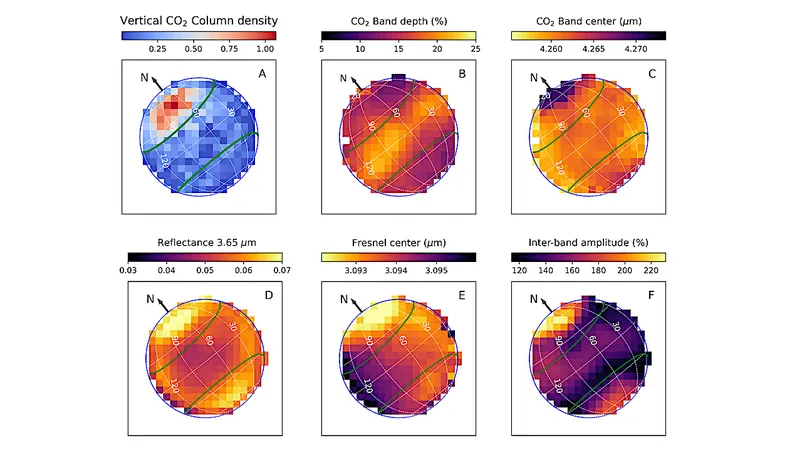
Shocking Discovery: Ganymede's Mysterious CO2 Exosphere Unveiled by James Webb Space Telescope!
2024-09-23
Recent Discoveries about Ganymede's CO2 Exosphere
Recent observations made by the James Webb Space Telescope have revealed fascinating details about Ganymede, Jupiter’s largest moon, which boasts a subtle yet complex carbon dioxide (CO2) exosphere. This thin atmosphere arises largely from the sputtering of water ice and potentially from the sublimation process. To date, scientists had previously detected only atomic hydrogen and oxygen in its exosphere, making this latest finding a groundbreaking advancement in planetary research.
Geographical Variations in CO2 Concentration
In a striking new study, researchers have identified the presence of CO2 gas across various terrain types on Ganymede, especially in areas severely impacted by intense radiation from Jupiter. Interestingly, the concentration of CO2 appears minimal over the warm equatorial regions, but significantly increases over the north polar cap of the leading hemisphere, achieving a surface pressure of approximately 1 microbar—indicating that this area acts as a crucial repository for CO2.
Mechanisms Behind CO2 Release
The team's models suggest that a peak in CO2 concentration observed around 12 local time can be attributed to “cold traps,” which facilitate the adsorption of CO2 molecules. However, scientists are still debating whether the mechanism for CO2 release in these high-latitude regions is primarily due to sputtering or sublimation. The unique surface-ice properties in Ganymede’s northern polar cap may explain this considerable atmospheric build-up.
Potential Sources of CO2
Moreover, the CO2 detected could have been released after the radiolysis of CO2 precursors or through sputtering processes involving CO2 trapped within the ice bedrock. Notably, the darker areas on Ganymede's surface, particularly in the northern polar regions, may host compounds that serve as precursors for CO2.
Implications for Ganymede's Atmospheric Dynamics
Researchers postulate that these CO2 molecules could be continually cycled—redistributing through cold trapping in ice-rich areas of the polar cap, with periodic release and redepositing occurring over Ganymede's day-night cycle. These observations lend important insights into the dynamic and intricate surface-atmosphere interactions on the Galilean moons of Jupiter.
Conclusion and Future Research
As the James Webb Space Telescope continues to revolutionize our understanding of celestial bodies, Ganymede stands out as a prime example of how complex and varied the atmospheres of moons can be, revealing much about the geological history and potential habitability of these distant worlds. Keep watching this space for more groundbreaking discoveries from the far reaches of our solar system!



 Brasil (PT)
Brasil (PT)
 Canada (EN)
Canada (EN)
 Chile (ES)
Chile (ES)
 España (ES)
España (ES)
 France (FR)
France (FR)
 Hong Kong (EN)
Hong Kong (EN)
 Italia (IT)
Italia (IT)
 日本 (JA)
日本 (JA)
 Magyarország (HU)
Magyarország (HU)
 Norge (NO)
Norge (NO)
 Polska (PL)
Polska (PL)
 Schweiz (DE)
Schweiz (DE)
 Singapore (EN)
Singapore (EN)
 Sverige (SV)
Sverige (SV)
 Suomi (FI)
Suomi (FI)
 Türkiye (TR)
Türkiye (TR)